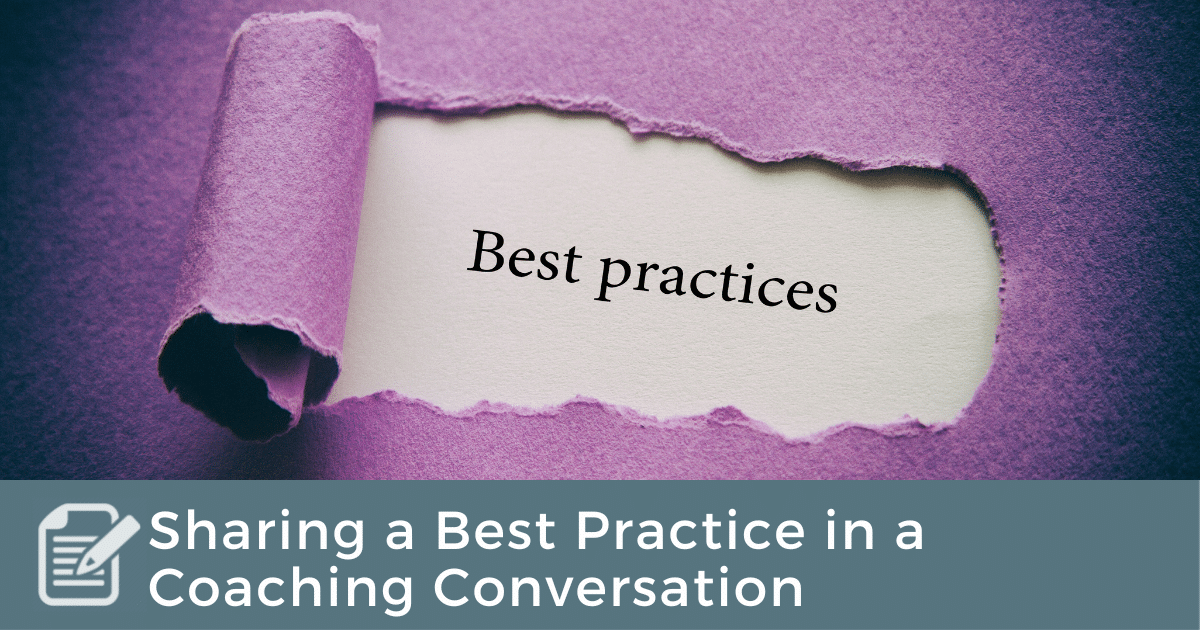
This morning I was coaching a client who I’ve come to love coaching. I wasn’t sure I would. He doesn’t exactly fit my niche, and frankly, I was a little worried he might not find the coaching as valuable as the price I charged him. This has not been the case. And one reason this is true is because I’ve been able to share some best practices with him during our coaching conversations.
Today was our fifth session in as many months. I’ve learned his rhythms. At the beginning, he’ll start talking. It’s stream of consciousness at first. It is a review of his context usually from a historical perspective. It is not going anywhere, but he is engaging his brain and thinking about his work. After about twenty minutes, I’ll stop him abruptly, though not rudely, and ask, “What do you want to work on today?” He appreciates the focus.
He has some meetings this weekend where he will rub shoulders with a lot of leaders in his organization, and his goal is to build trust with them. I asked him, what result do you want from earning their trust? He had some good answers. In future meetings, these leaders would give him an audience, consider his suggestions, and ultimately be willing to serve under his leadership in a few years when his time to lead arrives.
At this point, I could have led him through the process of thinking through what he would need to do to build that kind of trust with these leaders. Instead, I stood up and walked to the whiteboard. I wrote down the words “Listen Actively” and then gave him three responses to his listening:
- Ask curious questions.
- Make helpful observations.
- Encourage.
I added three more thoughts off to the side:
- No criticism.
- No stories.
- No sharing of your own ideas.
Finally, I wrote below all this, “They will think you are smart and helpful.” As I wrote, I briefly described each point.
This took three minutes. I sat down and gave the floor back to my client. “What are you taking away from this?” He repeated back some of the thoughts. He was processing.
Earlier in the conversation, he had mentioned being at a meeting where a few of the ideas presented seemed “off the wall” to him. I asked him to express some curiosity about one of those ideas. He asked a curious question, and then added, “That question was encouraging as well.” When we finished the coaching session, he was well-prepared for the weekend.
Guidelines for Sharing a Best Practice
While it is not ok to tell a client what to do, it is ok to share a best practice that could be helpful to their goals. Here are three guidelines I use when sharing a best practice:
- Relevant. The best practice comes from the listening. You suspect this will evoke more awareness in your client than just making them grind through how to accomplish their goal.
- Easy. The best practice should be instantly understood. It feels like common sense. Or if the best practice happens to be counter-intuitive, it is still simple to understand what kind of action is necessary to implement the practice.
- Brief. If it takes more than five minutes to explain the practice, it’s too long. Either don’t use it or learn to present the practice more quickly. You can give the client a follow-up resource to study outside the conversation.
When you properly insert a best practice into a coaching conversation, the client feels like a door was unlocked and finds it easier to build an action step that will help them move forward. I share a best practice more often than I don’t in my coaching conversations. My clients move ahead faster but continue to own their goals and action.


